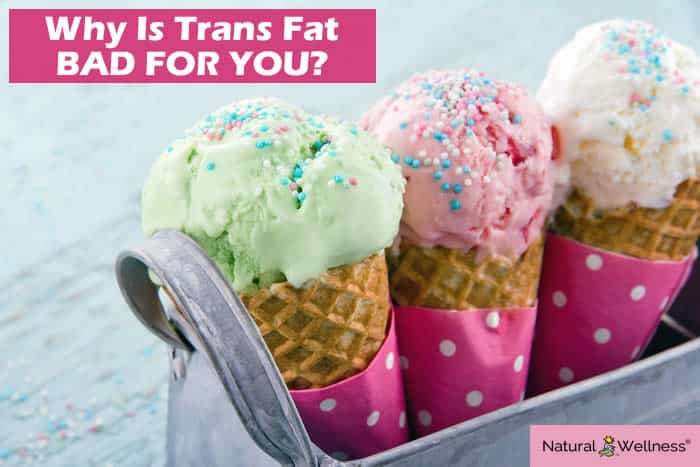

Of course, in this sense, we’re talking about “good” fat. Good fat is what fuels your body, softens your skin, and provides essential fatty acids and vitamins. There’s bad fat, too, and that’s the stuff that clogs your arteries and puts you at risk of heart disease and stroke.
Trans fat is that bad fat.
What Makes Trans Fat “Bad?”
To understand why trans fats are bad fats, you first need a basic understanding of “good” and “bad” cholesterol. LDL (Low-Density Lipoprotein) is bad cholesterol. It builds up in the walls of your arteries and increases the risk of blockages that lead to heart attacks and strokes. HDL (High-Density Lipoprotein) is good cholesterol. Think of HDL as an LDL mine sweeper. It finds excess cholesterol in your body and brings it back to the liver for processing.
Trans fats deliver a double whammy to your cardiovascular system by simultaneously increasing LDL and decreasing HDL. Today, most experts agree that you should limit your intake of this fat as much as possible.
So Why Is Trans Fat in My Food?
Because it’s cheap and it lasts a long time.
Trans fat occurs naturally in some meat and dairy, but its ubiquity in our food is due to an industrial process that adds hydrogen to vegetable oil. This hydrogenated oil is inexpensive to make and can be used multiple times by restaurants that utilize deep fryers.
Fortunately, because many restaurants and manufacturers now recognize the danger of trans fats, there’s a lot less of it in our food than there used to be. Fast food chains have phased out hydrogenated oils. Entire countries have reduced or restricted the use of trans fats in restaurants, as have particular states and cities in the U.S.
Where Is the Trans Fat Hiding?
Even though the U.S. Food and Drug Administration has ruled that hydrogenated oil is no longer “generally recognized as safe” to consume, trans fat lingers in many of our favorite snacks. And why not? It makes food taste better and helps it last longer on the shelf (though it also puts consumers at risk for heart attacks, strokes, and Type 2 diabetes in the future).
If you live in the United States, it is likely that you’re eating more trans fats than you think you are. If a food contains less than 0.5 grams of trans fat in a serving, the nutrition information can be labeled as 0 grams of trans fat. This is why it’s important to check the ingredients list for partially hydrogenated vegetable oil. The cost of these hidden trans fats to your body is cumulative and will quickly add up.
12 Foods That May Contain Trans Fats
- Just about anything fried or battered
- Pie crust
- Margarine sticks
- Shortening
- Cake mixes, frosting
- Pancakes and waffles
- Ice cream
- Microwaved popcorn
- Ground beef
- Cookies and crackers
- Frozen dinners
- Packaged pudding
Remember to check your labels!
How to Limit Trans Fat in Your Diet
Staying away from fried food is the big one. Other than that, eating a healthy diet of fruits, vegetables, whole grains, and low-fat dairy is recommended. Chucking frozen dinners and waffles for the food pyramid can be a difficult step, but natural supplements can ease the transition. If you must fry, use sunflower or olive oil in lieu of hydrogenated oil. Limit your intake of sugary drinks and red meat, and don’t overindulge on donuts, cookies, crackers, and cake.




